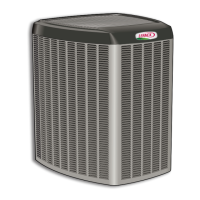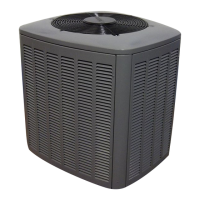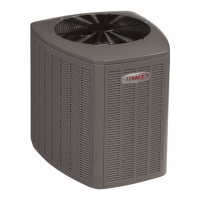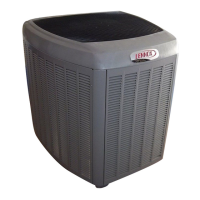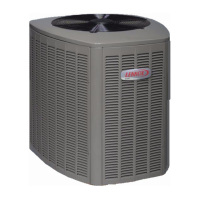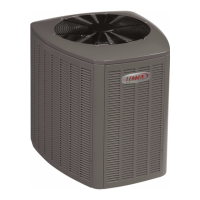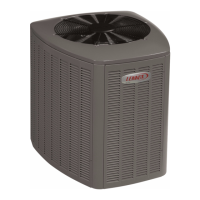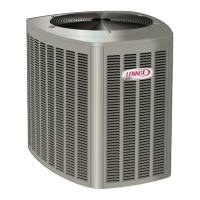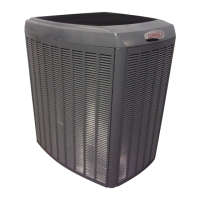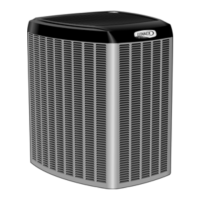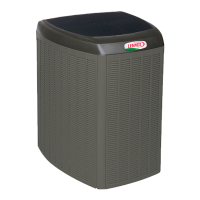Page 41
XC17
Component Field Configuration and
Troubleshooting
FAN MOTOR (B4) TEST PROCEDURE
A simple test can be used to test the fan motor operation. A
fully charged 9V battery will be required for this procedure.
See figure 23 for test procedure.
FAN MOTOR CONTROL (A177)
This section provides procedures for testing the fan
control.
FAN MOTOR CONTROL LED CODES AND
SEQUENCE OF OPERATIONS
During start up, the LED:
1. Display error conditions (see table 13), if present
2. If no errors are detected, then the LED code indicating
stage operation (see table 15) will display the
applicable code and then a long pause.
3. The fan motor speed / RPM (revolutions per minute)
indicator is displayed next (see table 14).
4. After the RPM indicator is displayed, there is a short
pause. The sequence repeats if a thermostat demand
is still present. See figure 20 for LED sequence. See
table 15 for description of flash and pause durations.
FAN MOTOR CONTROL TROUBLESHOOTING
Use the following subsections to verify and test the fan
motor control (A177).
Verifying Jumper Settings (J2)
The unit is shipped from the factory with the default fan
motor speed setting (in RPMs) required for each specific
model. Use table 14 for one−stage to verify that the jumpers
are set correctly for the specific unit.
Verifying LED Status Codes
During start up, the fan motor control LED will display
any error conditions. If error conditions exist then no
other codes will display. If no error conditions are
present, then the stage status and and RPM indicator
are displayed. Fan motor speeds are not adjustable for
a single stage outdoor unit (see table 14).
Verifying Correct DC Output Voltage (J2)
The following three methods can be used to determine
whether the fan motor (B4) is operating at the correct
RPMs based on unit size.
1. Use the information provided in tables 14 to verify that
all four jumper terminals are set correctly for the
specific size unit.
2. Verify LED RPM indicator is displaying the correct flash
sequence for the applicable size unit (see table 14).
3. Test DC voltage output on the fan motor control’s J2
terminals (see figure 21) while the motor is under full
load. The actual voltage tested should match the
voltage listed in table 14 for the specific unit.
4. If no voltage is detected at the J2 terminals, verify there
is a Y1 demand at the thermostat.
If there is a demand, proceed to the next section for further
testing.
Verifying Correct Input Voltage (ECM/Y1,
ECM/Y2, ECM C and EXT ECM/R)
Using a voltmeter, check voltages on the following fan
motor control inputs using table 11. Voltage will only be
present during a thermostat demand. See figure 22 for test
example.
If correct voltages are detected at applicable inputs during
a demand, and no voltage is present at the J2 terminals,
then fan motor control should be replaced.
Table 11. Fan Motor Control Voltage Inputs
Input
Thermostat
Demand
Voltage
Present
ECM/Y1 and ECM C
YES 24VDC
NO NONE
EXT ECM/R and ECM C
YES 24VAC
NO NONE
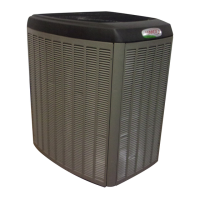
